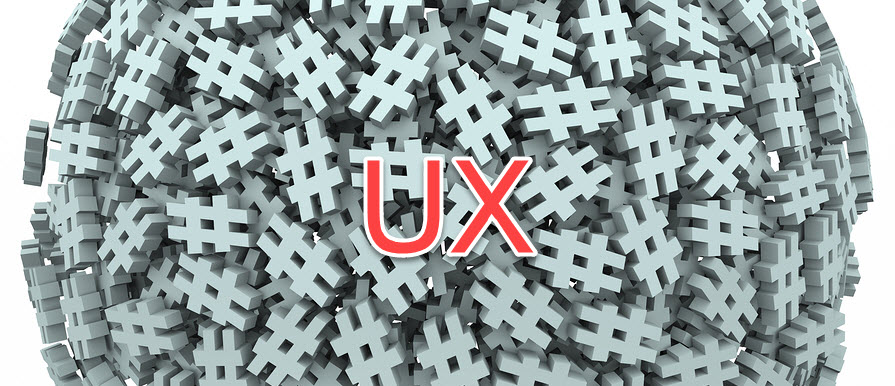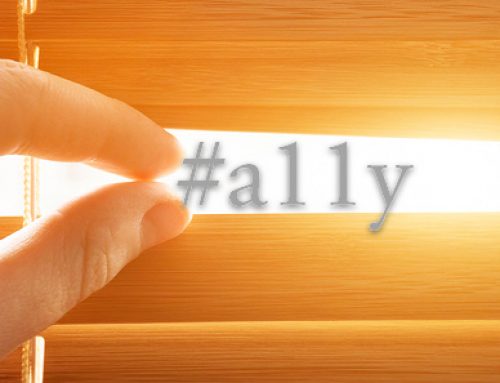For many years, whenever I gave talks about UX and social media, I told the audience to use the #UX hashtag when posting UX-related tweets. But this advice was only based on my own anecdotal experiences; I’ve personally used the UX hashtag about 1,450 times since I first used that tag in May 2011 to tweet about a blog entry. Until recently, I had never come across any hard data on how the UX tag is used or how UX (and related) professionals tweet UX-related content.
A few months ago, however, I was excited to have the opportunity to get my hands on this type of information! My client, George Washington University Libraries, needed help improving the interface for a new tool that they had developed called Social Feed Manager (SFM). While working with them, I explained my own curiosity about UX-related hashtags and asked whether they’d be willing to let me use their tool to learn a bit more about how UX-related content is tweeted.
Methods
Seeds: They agreed and asked me to select some seed terms, which would then pull in all tweets from the Twitter firehose that had keyword matches. I selected a variety of terms for this first pass that I felt would help capture a large chunk of UX-related tweets: UX, usability, ixd, userexperience, interactiondesign, uxdesign, and uxjobs. (Note: I also included a11y, but that will be reviewed in a later post focused on accessibility).
Dates: I analyzed a dataset that covered exactly 20.5 days, from February 1 at midnight UTC until February 21, 2017 at noon UTC.
Hashtags only: The initial data set included the selected seeds both with and without the hash. For the purposes of this analysis (and because the enormous data file reduced Excel to a sluggish crawl), I limited this preliminary analysis to only cases where the terms were used as hashtags.
Analysis limited to English-language tweets for now: I also limited it to tweets that were tagged as “en.”
Findings are preliminary: While the findings from this review should be considered a freeze-frame glimpse, I hope that they provide some insights to the UX community on how UX-related hashtags are being used and who is using those tags.
Tweets and Retweets are included: For this preliminary analysis, both tweets and retweets are considered as unique and equal elements. For the record, retweets represent 46% of all tweets using these hash tags.
#UX blows away all other tags
Of the initial hashtags that I selected, #ux appears to blow away any other tags in terms of frequency of tweets and retweets – on average, 4,949 times per day!
Tweets and retweets for those initial seed tags are as follows:
- #ux (101,462) (of which 47,430 are retweets)
- #uxdesign (13,080) (of which 6,652 are retweets)
- #userexperience (7,007) (of which 3,642 are retweets)
- #usability (5,568) (3,054 are retweets)
- #uxjobs (3,389) (of which 330 are retweets – way less likely to get retweeted than the rest!)
- #ixd (1,027) (of which 402 are retweets)
- #interactiondesign (385) (of which 147 are retweets)
At least one of these seed hashtags were used a total of 116,106 times, and 14,318 tweets used at least two of the above tags.
Thoughts: If you want an interesting stream of UX related posts, #ux and #uxdesign are good places to start. When you tweet UX-related content, use UX hashtags. Specifically, use #ux, but consider adding others from the lists above as space permits. People do search out those tags!
What other tags are combined with the above?
I defined a popular companion hashtag as one that made an appearance at least 500 times. These companion hashtags are presented below.
Note: As you’ll see from this list, it’s possible that #UI, #design and #webdesign could give #UX some serious competition, which could be analyzed better with another data run. However, regardless, these three tags would also cover design beyond user experience.
- More than 2,000: #ui (23,179), #design (21,991), #webdesign (14,606), #tech (5,887), #cx (5,753), #webdev (5,446), #ai (5,169), #dribbble (4,428), #designthinking (4,259), #iot (4,094), #css (3,619), #css3 (3,415), #uxjobs (3,389), #seo (3,152), #mobile (2,922), #html5 (2,817), #startup (2,361), #machinelearning (2,274), #javascript (2,196), #fintech (2,152), #bigdata (2,120), #uidesign (2,111), #marketing (2,014)
- More than 1,000: #smartcity (1,826), #infographic (1,787), #vr (1,740), #jquery (1,722), #web (1,714), #makeyourownlane (1,587), #defstar5 (1,556), #digital (1,403), #business (1,355), #cro (1,353), #brand (1,318), #ecommerce (1,268), #prodmgmt (1,182), #agile (1,152), #smm (1,097), #digitalmarketing (1,090), #social (1,061), #technology (1,026), #innovation (1,005)
- More than 500: #ia (998), #platform (985), #start (978), #growthhacking (970), #analytics (948), #saas (896), #productdesign (864), #chatbots (856), #sketch (851), #research (836), #website (819), #banking (808), #insurtech (807), #job (806), #accessibility (806), #api (803), #designer (771), #socialmedia (767), #servicedesign (758), #app (749), #animation (746), #ar (720), #sass (716), #startups (702), #apps (685), #a11y (681), #b2b (680), #wordpress (677), #chatbot (677), #data (654), #tutorial (616), #jobs (611), #html (610), #userresearch (606), #branding (605), #hiring (594), #sketchapp (571), #product (559), #fb (541), #webdevelopment (538), #content (533), #js (516), #omni (515), #apple (511), #sales (509), #bots (507), #uxd (502)
Thoughts: When searching out additional content or tweeting, consider the frequency of use of these tags. Of course, frequency only matters when the meaning is the same. For example, #uxdesign is likely better to use than #uxd since they have the exact same meaning, but #uxd is used much less. On the other hand, while #userresearch doesn’t have numbers that different than #uxd, it is used the most frequently in this dataset to represent user research.
So who’s tweeting about UX?
A total of 35,315 people used or retweeted these UX-related hashtags in this timeframe snapshot.
- These accounts have a median of 354 followers and 459 friends.
- There are 298 verified users among these accounts.
- Top five accounts with the most followers that use these tags at least once include: @HarvardBiz, @googledevs, @smashingmag, @printmag and @DesignerDepot.
Where are they tweeting from?
A number of account-specified locations showed up more than 50 times.
Note: This is account-level data and was cleaned up (down to anything appearing at least 20 times) so that, for example “Washington, D.C.” or “Washington DC” or “Washington D.C.” were grouped together. Accounts without a location specified or with things like “anywhere” or “worldwide” were ignored. All user specified cities and/or states/territories and/or countries were included in this analysis.
Reminder: This only includes tweets that were tagged with a language of “en” for English.
- US Locations: New York, NY (734), San Francisco, CA (560), Chicago, IL (352), United States (297), Los Angeles, CA (265), Seattle, WA (259), Boston, MA (253), Atlanta, GA (229), Washington, DC (211), Austin, TX (203), California (150), Dallas, TX (130), Brooklyn, NY (109), Philadelphia, PA (87), San Diego, CA (84), Denver, CO (77), Portland, OR (70), Minneapolis, MN (61)
- Canadian Locations: Toronto (308), Vancouver (91), Canada (89)
- UK Locations: London (1,473), United Kingdom (365), Manchester (115), Bristol (58), England (61)
- Other European Locations: Paris (465), France (115), Dublin City (178), Ireland (52), Berlin (233), Germany (87), Madrid (92), Barcelona (87), Amsterdam (52), Helsinki (81)
- Australian Locations: Melbourne (246), Sydney (237), Australia (95)
- Indian Locations: India (211), Bangalore (92), Bengaluru (84), New Delhi (81), Mumbai (66), Hyderabad (59), Pune (53)
- Singapore (95)
Thoughts: If you are looking for a new job and are willing to move (if you don’t already live around these cities), it could be hypothesized that a higher level of tweets in particular cities roughly implies more UX professionals living and working in commutable distance to those cities.
What words are used in account profile descriptions?
- A total of 31,957 accounts had descriptions, and 9,603 of them included at least one of the following UX/design/creative words: designer (7,761), ux (4,845), experience (1,823), creative (1,178), ux design (1,142), research (945), user experience (687), graphic designer (416), product designer (377), cx (343), usability (285), Interaction design (210), accessibility or “a11y” (182), customer experience (142), human factors or “hf” (128), service design (121), visual design (102)
- In addition, a total of 15,325 of the accounts included either the words above or the related-but-not-specifically-UX words: UI (3,543), marketing (3,159), developer (1,537), consult or consultant (1,430), agency (751), branding (312), web designer (235), product manager (185), project manager (112)
Beyond my initial look
This post reveals conclusions from my initial sweep through the large data set provided to me. I am glad that I can now rely on some more solid information about UX and twitter to share in my talks, beyond my anecdotal observations. Stay tuned for an accessibility analysis coming up just as soon as I analyze that portion of the data set!
Conceptual image of Hashtags: iqoncept / BigStockPhoto.com

